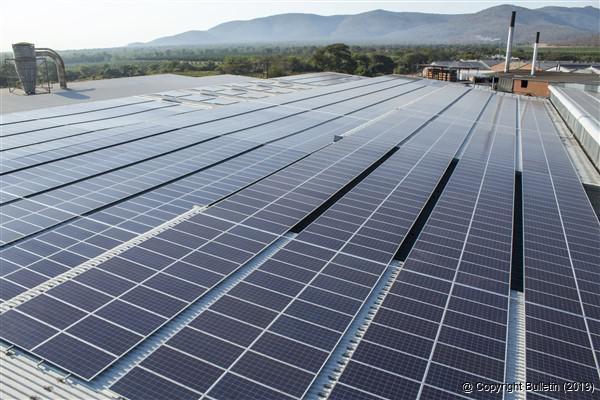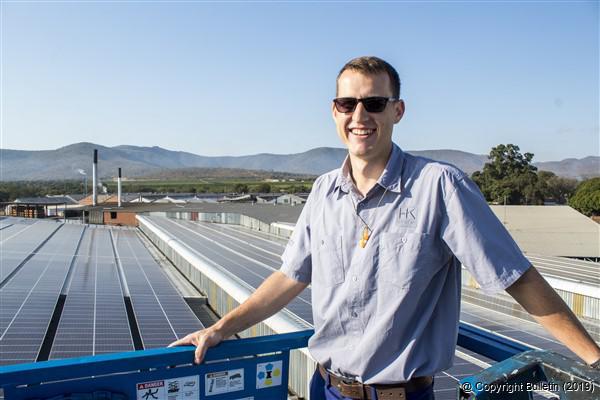









With the amount of power outages plaguing the Tzaneen and surrounding areas, large corporations, farmers and industrial business particularly in the Letsitele area have started looking for alternative solutions to ease the incredible burden they face daily. With power supply to some areas interrupted for periods extending up to three days at a time, and with the municipality unable to cope, it has become paramount for the end user to seek solutions that would not only relinquish some of the strain on the aged infrastructure, but also ensure that production can continue uninterrupted.
It is in light of this that one pioneer in Letsitele has decided to take a leap into the solar power arena. Houers Koöperatief Beperk the largest and most trusted packaging provider in the area this week completed a three month-long solar panel installation which should see them running their operations largely off solar power.
Bulletin spoke to Tertius Erasmus, Plant Engineer at Houers Koöperatief Beperk on Wednesday morning and he explained that the system is fully integrated with the municipal power grid and backup generators which will ensure that their facility stays up and running even during power outages. A total of 3 820 solar panels each measuring 2m2 have been installed atop the main production facility’s roof. Special frames were installed to ensure that no shade covers any of the panels despite the roof being a tiered construction.
The system generates close on a Megawatt power. This is the maximum amount of power permitted to be generated without a special license which one would need to obtain from the National Energy Regulator, NERSA. In total, around 70 kilometres of cabling was used in the installation.
These panels harvest energy from the sun as direct current (DC) which is then transmitted to a series of inverters that convert the DC current into alternating current (AC) and feed it into the municipal substation that powers the facility. Three large generators are installed as backup and support for the solar system in case of prolonged outages.
“This is indeed a very exciting project for us and we are confident that we have made the right move here which will spark our neighbouring producers in this area to follow suit. The best analogy here is to liken the power grid to a long length of irrigation pipe. Every user plugs a sprinkler into the system and eventually the users at the end of the line will receive less water than those at the start of the line. By implementing our solar system, we have by no means cancelled out the municipality, but we have removed a few of our own sprinklers off the pipeline to lessen the load on the system,” explained Erasmus.
The solar panels are able to withstand the elements and even mild hailstorms should do very little damage. They have a lifespan of around 20 years after which they will be replaced and maintenance on the system is not very labour intensive as it needs to be cleaned once a month to remove dust and other particles from the panels and ensure that they function unencumbered.
At the time of going to print the technicians from Solareff, the Gauteng-based company responsible for the installation of the system, were conducting the final tests before the system goes fully live on Friday.
Tel: 015 345 8100 orders@houers.co.za



